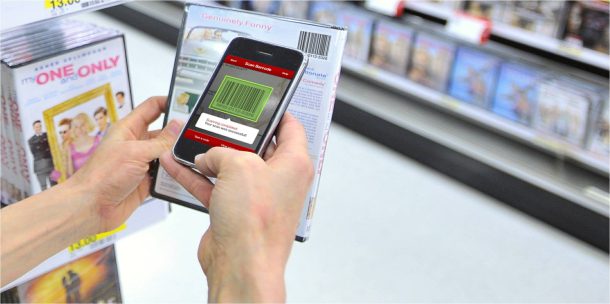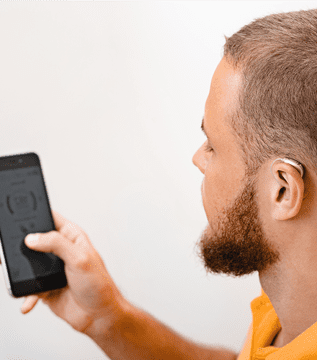
Article
How Design Can Improve Ratings for Medical Device Apps
This post was previously on the Pathfinder Software site. Pathfinder Software changed its name to Orthogonal in 2016. Read more.

In part one of this series, I wrote about how mobile should be central to your development strategy because of the major shift that is happening to people’s computing habits. In part two, I cover key characteristics you need to consider in determining what you should (and shouldn’t) build. In part three, I will cover the opportunities this presents, and key questions to ask when you are exploring those opportunities.
Within the current mobile computing platforms, there are important differences between smartphones and tablets. A smartphone (iPhone, Android, Blackberry and other emerging platforms) is for quick, bite size, on the go interactions. You pull it out of your pocket, do something quickly, and put it back. You can record, capture and share.
That means application interactions should be optimized for this type of use: fast, easy, bite size interactions first, larger interactions available, but broken into bite size chunks.
The use of smartphones has contributed to the use of platforms and applications built on small bite size chunks of information, like Twitter, Foursquare or Instagram.
At the latest when the iPad sold over 3 million units in the first 3 months, people realized that this was not a small hobby, but the start of something big. Selling 15 million iPads in 9 months confirmed it, as did the spectacle of every manufacturer announcing a tablet at CES 2011. This space in between is still evolving, but it’s huge, with estimates for 2011 sales ranging from 30 to 50 million, and further growth expected beyond that.
If laptops want to be on desks, and smartphones are for small, bite size interactions, iPads (and other tablets coming on the market like the Blackberry Playbook, Android tablets from Motorolla, Dell and Samsung, as well as the just announced HP Touchpad) are for all the spaces in between on the go and at your desk, where you need a bigger screen but otherwise desire the ergonomics of a smartphone.
This turns out to be quite a few spaces: Some examples include:
Larger tablets are much more personal than a desktop, and much more immersive than a smartphone. Size makes a difference.
Steve Jobs made an interesting analogy when he compared the iPad to a car and a desktop or laptop to a Truck. Nearly everyone drives a car, but only some people, some of the time need the specialized features of a truck. I believe there’s a lot of truth to that analogy, which will be borne out over time.
As YCombinator’s Paul Graham states:
“Many if not most of the special-purpose objects around us are going to be replaced by apps running on tablets … I think it will surprise people how many things are going to get replaced … The advantages of doing things in software on a single device are so great that everything that can get turned into software will.”
Smartphones and tablets continue to add more sensors to the base platform, from audio and cameras to GPS, accelerometers, compasses and gyroscopes. These are additional pieces of context, which can be used together with location and time based information to track movement and interpret visual input.
Sensors that aren’t on board can easily and cheaply be attached via functional cases (cases for smartphones or tablets that contain other sensors or electronics) or Bluetooth, further enhancing your ability to interpret and augment your surroundings. As a consequence, a lot of dedicated devices can now be substituted through mobile platforms. We expect this to be an accelerating trend.
Examples include point of sale systems with magnetic card readers, blood analysis, temperature and chemical sensors, bar code scanners, augmented reality stargazing like Starwalk and even keys.
All of these sensors and Internet connectivity let you create feedback loops, where your customers are collecting data – whether you a retailer like Amazon collecting comparison shopping information via barcode scanners, or a parking application collecting up to date parking space info via your customers use, or an electronic medical records app collecting information on physician rounds.
Mobile offers you the opportunity to form deeper and more meaningful engagements with your customers, to provide new products and services, to transform business processes, and radically disrupt industries.
When generating ideas for possible applications, don’t just focus on the device, but focus on the context. Mobile presents you with new ways to allow people to interact with information. This means you can break free of old habits and what it means to “compute”. Be mindful of your own thinking – don’t be anchored in the past.
Start by asking yourself three questions:
1. How much time do they spend at the desk, on the go, and in the spaces in between?
2. What do they do there? What problems do they have?
3. How can you help them kick ass?
This is a good starting point for your brainstorming. Once you’ve come up with product ideas and extensions, work on validating them using customer development or the Pragmatic Marketing framework.
Related Posts

Article
How Design Can Improve Ratings for Medical Device Apps

Article
Bluetooth Trends in Smartphones: Effects on Medical Devices

Article
Developing Cross-Platform Medical Device Apps with Flutter

Article
CBI Mobile Medical Apps Summit 2015